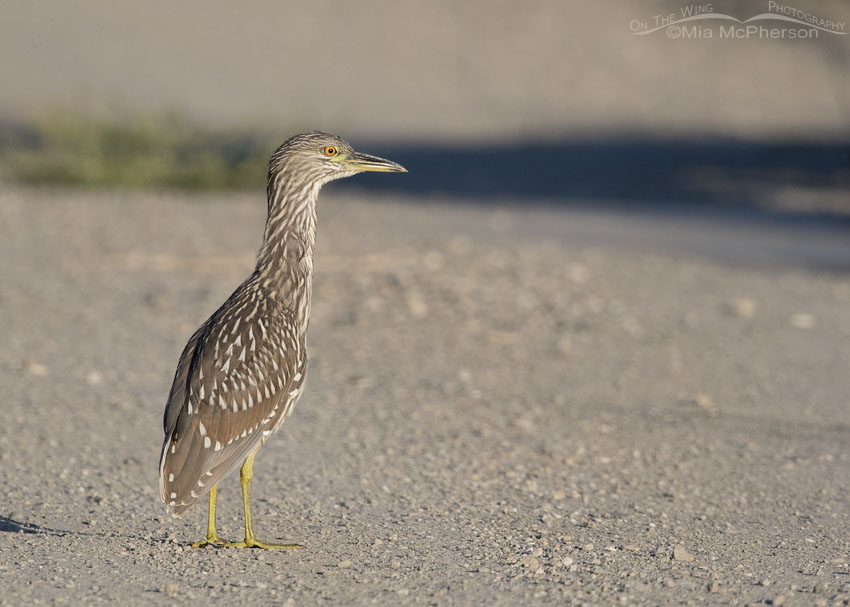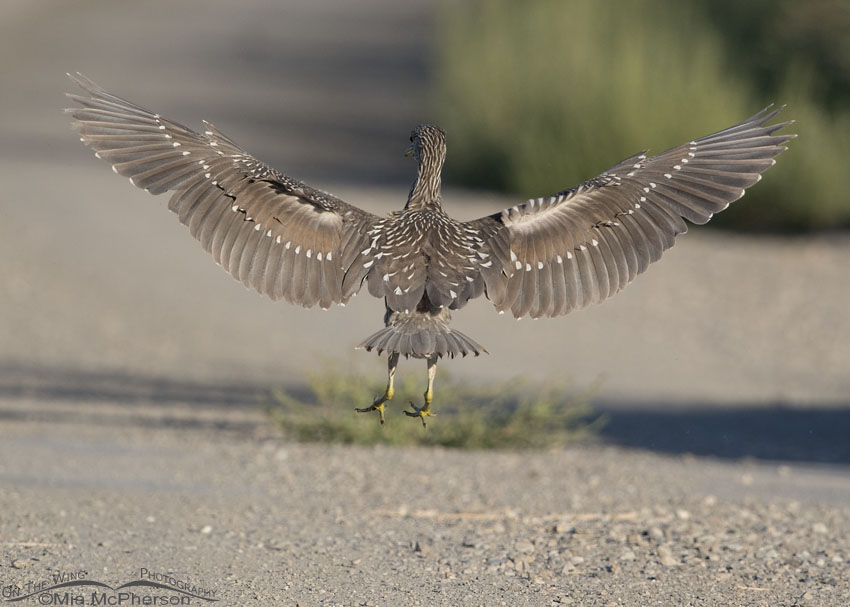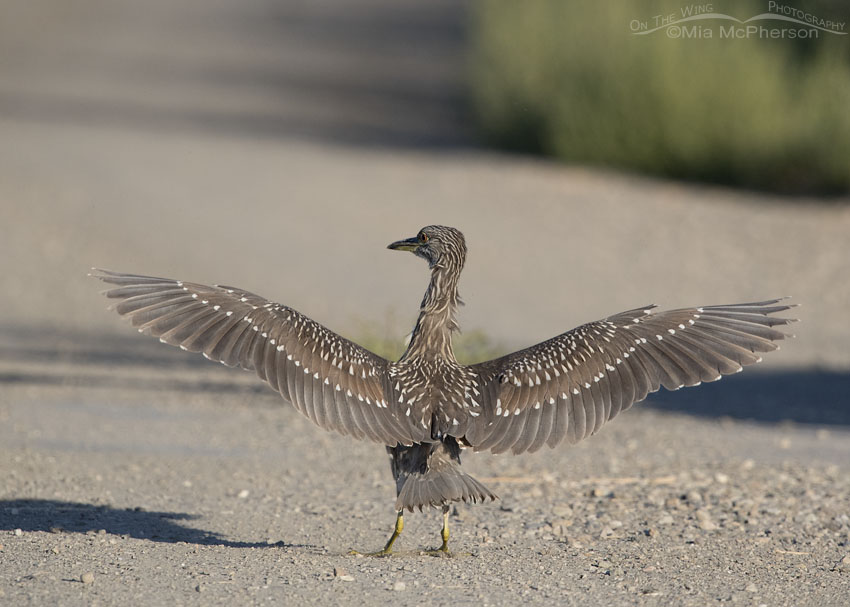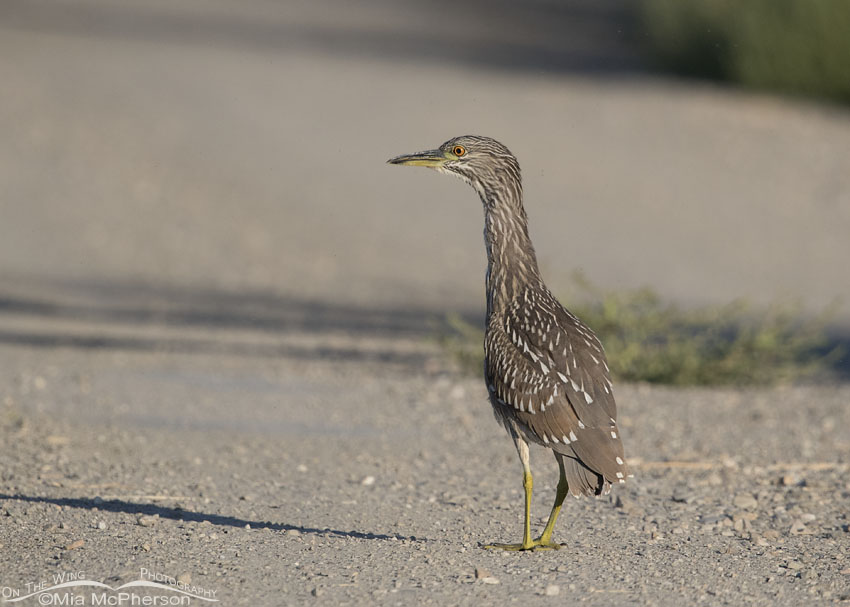 Juvenile Black-crowned Night Heron on the auto tour loop – Nikon D500, f6.3, 1/2000, ISO 640, Nikkor 500mm VR with 1.4x TC, natural light
Juvenile Black-crowned Night Heron on the auto tour loop – Nikon D500, f6.3, 1/2000, ISO 640, Nikkor 500mm VR with 1.4x TC, natural light
It was a nice morning at Bear River Migratory Bird Refuge yesterday, the air was fairly clear, the temps started out in the upper 50’s and the nicest part was that there were birds to be found. The last few times I have been to the refuge it has been slow bird-wise but it seems to be picking up now, I even saw some large flocks of dowitchers on the wing but they were too far away to photograph.
It was a juvenile Black-crowned Night Heron encounter on the auto tour route at the refuge and the resulting photos that made me smile the most when I viewed the images on my monitor at home, the images aren’t spectacular, the setting wasn’t that appealing and some of my favorite photos of the young heron don’t even show the eyes of the bird, just views from behind.
 Leaping juvenile Black-crowned Night Heron – Nikon D500, f6.3, 1/2000, ISO 640, Nikkor 500mm VR with 1.4x TC, natural light
Leaping juvenile Black-crowned Night Heron – Nikon D500, f6.3, 1/2000, ISO 640, Nikkor 500mm VR with 1.4x TC, natural light
The juvenile Black-crowned Night Heron was standing on the gravel road and I was able to take a nice series of photos of it looking around the marshes when it took what appeared to be a short, flying leap towards the west. I kept firing away even though the young heron had its back to me and I am glad that I did because I don’t often get great views of these wading birds from the back.
 Sassy looking juvenile Black-crowned Night Heron – Nikon D500, f6.3, 1/2000, ISO 640, Nikkor 500mm VR with 1.4x TC, natural light
Sassy looking juvenile Black-crowned Night Heron – Nikon D500, f6.3, 1/2000, ISO 640, Nikkor 500mm VR with 1.4x TC, natural light
I thought it was neat to see the juvenile plumage patterns from behind including the large white spots on the coverts when its wings were fully spread.
 Black-crowned Night Heron juvenile on the road – Nikon D500, f6.3, 1/2000, ISO 640, Nikkor 500mm VR with 1.4x TC, natural light
Black-crowned Night Heron juvenile on the road – Nikon D500, f6.3, 1/2000, ISO 640, Nikkor 500mm VR with 1.4x TC, natural light
The juvenile heron lifted off not long after I took this last photo and flew away from the road. I didn’t have long with this bird but I enjoyed every second with it.
Black-crowned Night Herons are year round residents here in northern Utah, they survive the extremely hot days of summer and the bitter cold of our harsh winters. They are sturdy herons, that is for sure.
I also had some wonderful photo opportunities with Forster’s Terns and their young and some American White Pelicans, photos to come soon.
Life is good.
Mia
Click here to see more of my Black-crowned Night Heron photos plus facts and information about this species.


Hey Mia…good old Eadweard Muybridge has nothing on you. Great movement captures. Thanks.
LOVE that jump for joy in the second.
Oh how lovely! Seriously lovely. Thank you!
Delightful!
Sorry about double comments…this evil thing is at it agsin…
These birds always look like they’re put together with mismatched parts…head of a bigger bird, body of a smaller one and legs that too short for the size of their body…
These birds always look like they’re put together with mismatched parts…head of a bigger bird, body of a smaller one and legs that too short for the size of their body…
You are much to critical of your images. These are great! Your emails are the first one I open when I get to work and they often put a smile on my face.
I captured a photo of a similar looking bird in 2006 at Seney Wildlife Refuge and wasn’t able to identify it. I’ll have to look it up again and see if it was a juvenile heron! Mia, I would like to refer to your Eagle Plumage post in 2011 in my soon-to-be-published Children’s Book of a Bald Eagle. This book is the 3rd installment of a 4-part series based on a True Story “B3 the Baby Eagle” (1st book). The subsequent books are fictionally following her timeline as she journeys to adulthood. 2nd book is “B3 the Juvenile Eagle” and the one that will be published soon is “B3 the Subadult Eagle”. Can you contact me for more details on the e-mail provided in this post? Thanks!